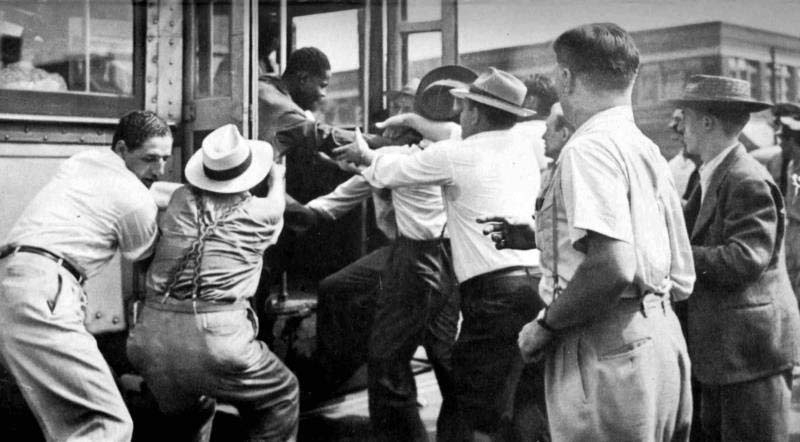The 1950s were a decade marked by the post-World War II boom, the dawn of the Cold War, and the civil rights movement in the United States. During the 1950s, however, the struggle against racism and segregation entered the mainstream of American life. While racism was still very present, the integration movement had made some progress in the trial of World War II.
America had just witnessed black and white soldiers fight together for the same cause for the first time. In the Holocaust, they also saw what horrific forms state-sanctioned racial superiority could take. The problems of the Great Depression affected nearly every group of Americans, yet no group was harder hit than African Americans.

The Great Depression of the 1930s worsened the already pathetic economic situation of African Americans. They were the first to be laid off from their jobs, and they suffered from an unemployment rate that was two to three times that of whites. In early public assistance programs, African Americans often received substantially less aid than whites, and some charitable organizations even excluded Blacks from their soup kitchens. By 1932, approximately half of African Americans were out of work. In some Northern cities, whites called for African Americans to be fired from any jobs as long as there were whites out of work. Racial violence again became more common, especially in the South. Lynchings, which had declined to eight in 1932, surged to 28 in 1933.
Although most African Americans traditionally voted Republican, the election of President Franklin Roosevelt began to change voting patterns. Roosevelt entertained African American visitors at the White House and was known to have several black advisors. According to historian John Hope Franklin, many African Americans were excited by the energy with which Roosevelt began tackling the problems of the Depression and gained "a sense of belonging they had never experienced before" from his fireside chats.
(President Franklin D. Roosevelt)
The complex racial norms of the 1940s in America both sustained the color barrier and supported its challenges. Around 1.5 million African Americans left the South during the 1940s, mainly for the industrial cities of the North. Once again, serious housing shortages and job competition led to increased tension between Blacks and whites. Race riots broke out and the worst of them occurred in Detroit in June of 1943 where forty deaths and seven hundred injuries took place.

(Image from the Detroit race riot in 1943)
Moving into the 1950s, life was fantastic for white males. While the 1950s were something of a golden age for blue and white-collar workers, it was barely a time of expanding opportunities for African Americans. Rigid segregation was the rule throughout the country, especially with housing, jobs, and employment. In the South, public accommodations were segregated by law, while in the north it was usually happening by custom or de facto segregation. The new suburban neighborhoods that sprang up in the 1950s were almost completely white and this remained true for decades. According to Eric Foner, “As late as the 1990s, nearly 90% of suburban whites lived in communities with non-white populations less than 1%.” It wasn’t just housing that was hurting the black community. In the 1950s, half of black families lived in poverty. When they were able to get union jobs, black workers had less seniority than their white counterparts so their employment was less stable, and sub-standard segregated schools severely limited their educational opportunities. This is where it all begins with the case of Brown vs. Board of Education.

No comments:
Post a Comment